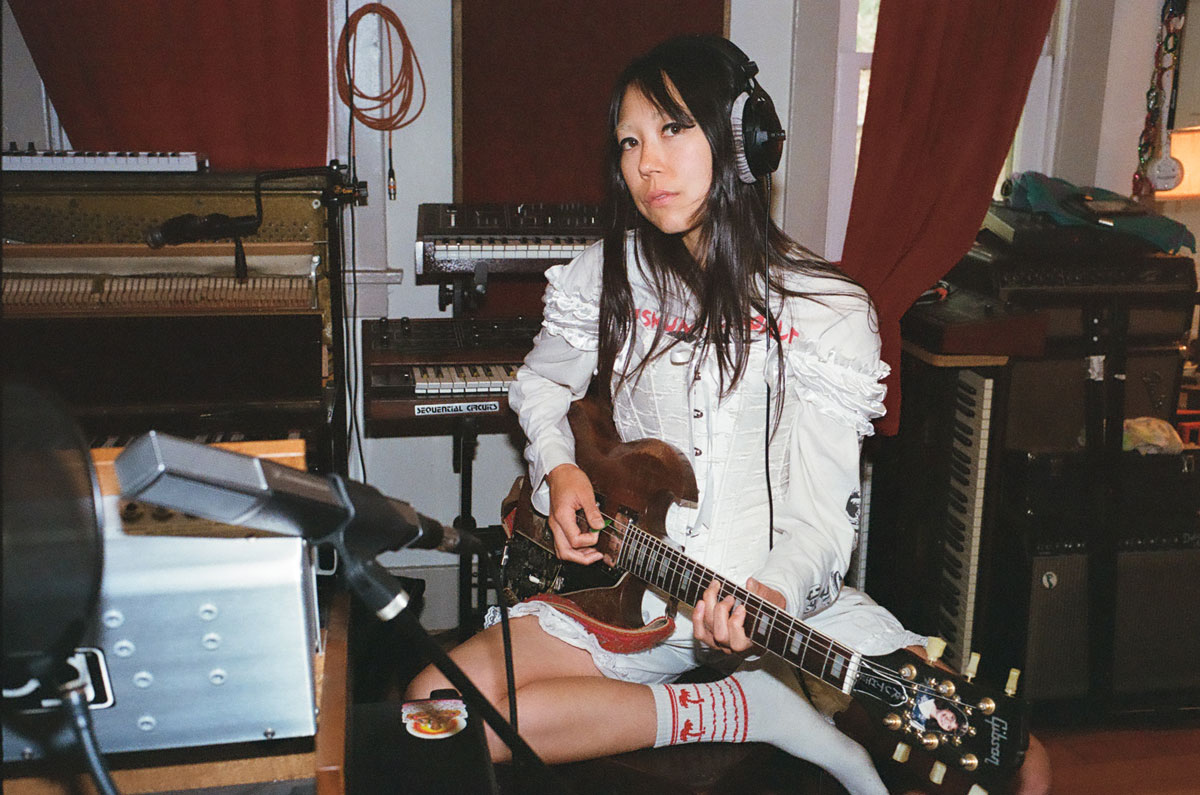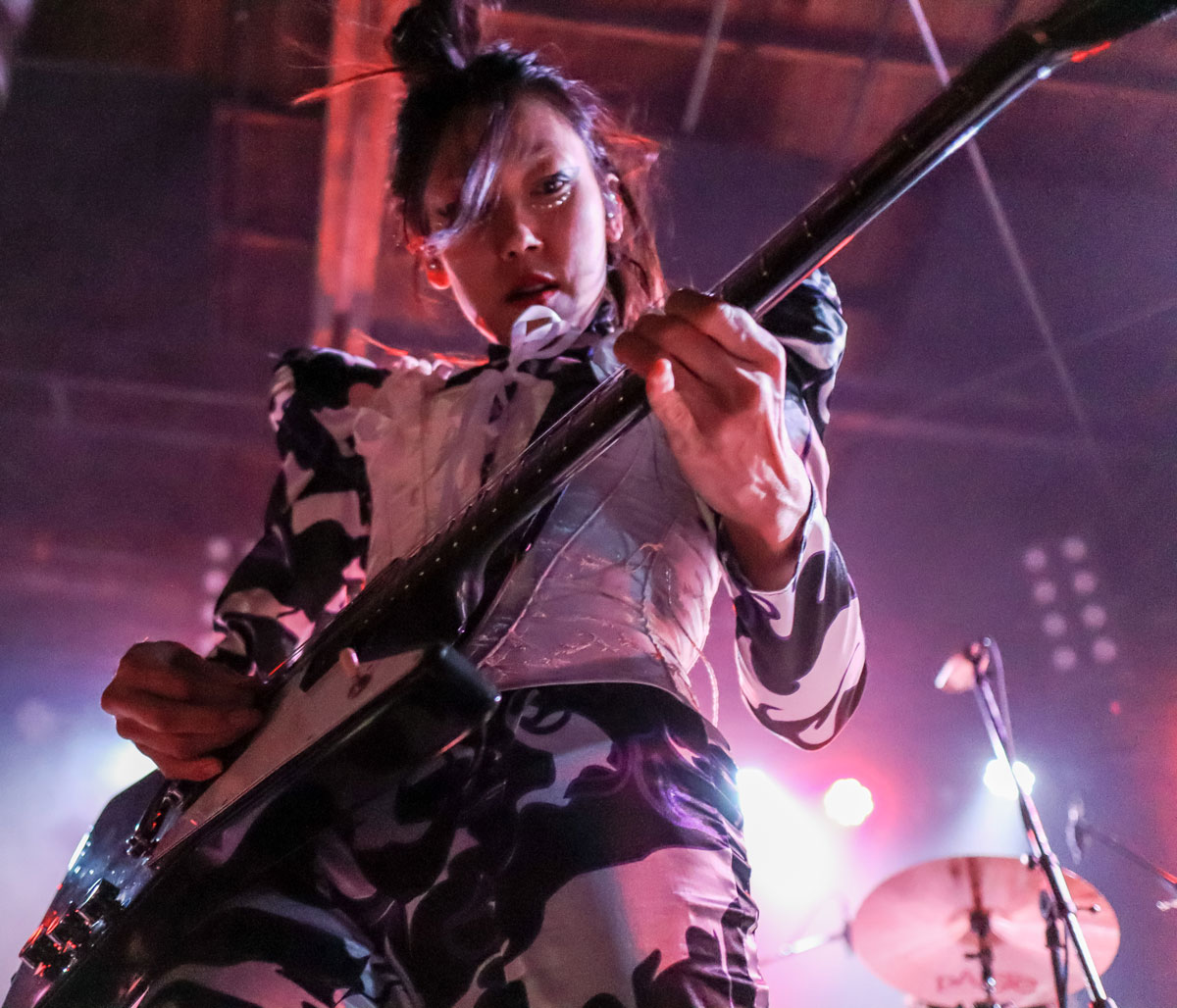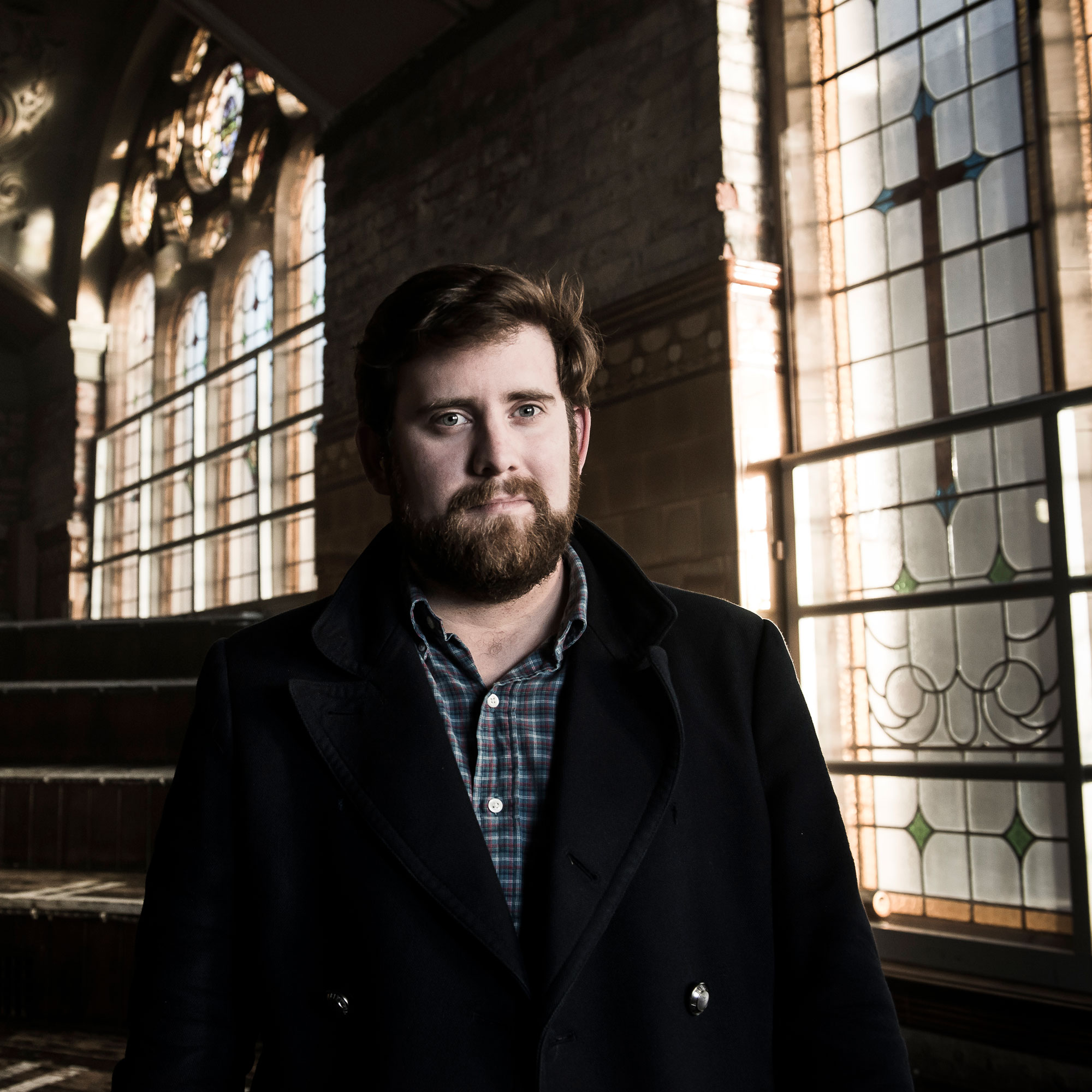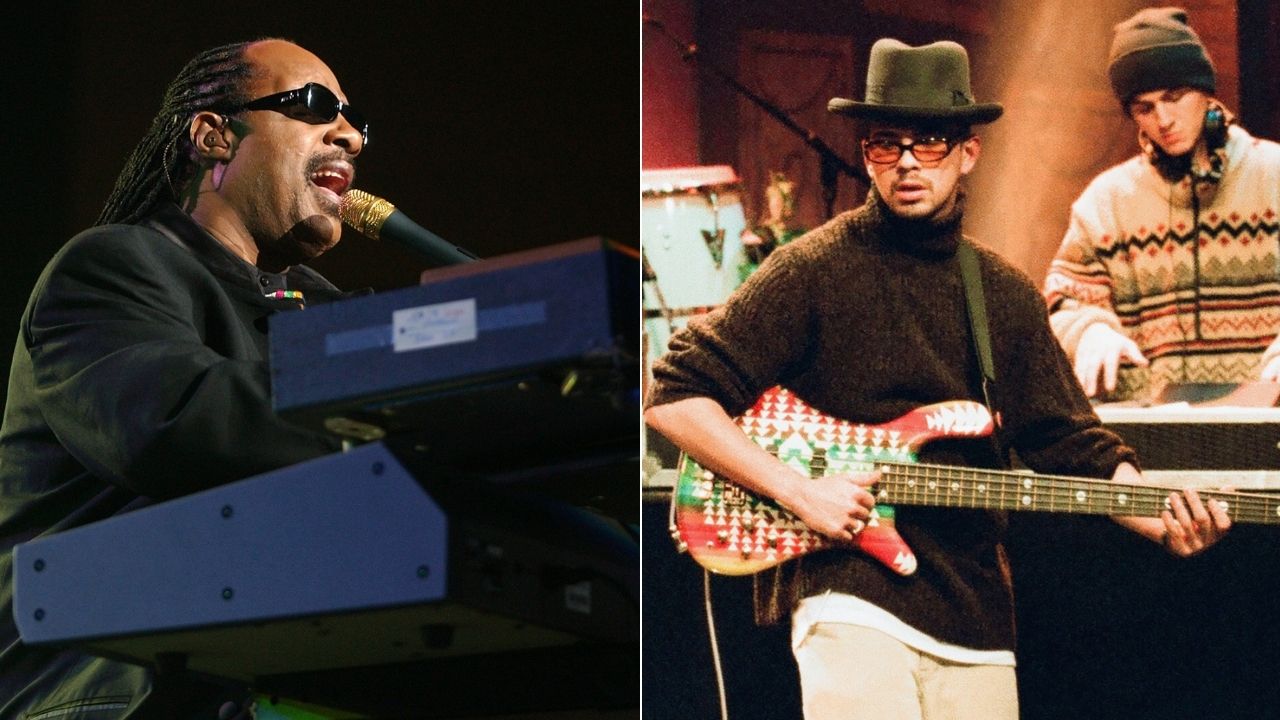Sasami: “Metal may be mostly a white man's genre, but the emotions that go with the sounds of metal guitar are emotions that all humans experience”
The classically trained songwriter on undergoing a metal transformation and hiring Megadeth's drummer for her second album, Squeeze – a record that is vicious and virtuous in equal measure

LA artist Sasami Ashworth’s second album Squeeze is a sparkling, writhing mass of brutality and beauty. It is not a pandemic record as such, but the extremes – encapsulating the love and violence that represent humanity’s best and worst traits – have undoubtedly been shaped by that time.
Ashworth’s musical beginnings revolved around the French horn, before she studied classical composition. She then spent time playing synths with Cherry Glazerr and contributing vocals and instrumentals to records from the likes of Wild Nothing, Curtis Harding and Avi Buffalo. The guitar, by comparison, has entered the picture quite late.
As such, Squeeze uses a composer’s ear to sew together roughly hewn strands of singer-songwriter fragility, indie fuzz clatter and whiplashing broadsides of drop-tuned metal rage. It’s a spectrum of guitar-based influences that recalls everything from System of a Down to Dinosaur Jr. and Alanis Morissette.
The result is bold and experimental, saccharine and shocking. It is also very metal. How many indie songwriters would hire Megadeth’s drummer Dirk Verbeuren? Or channel the spirit of a vengeful Japanese water spirit?
“I was really trying to create an experience for the listener,” reflects Ashworth. “A soundtrack for other people to have a cathartic experience with their anger and frustration. I wasn't trying to scare myself. I was trying to build a haunted house that I knew would scare other people.”
We spoke to Ashworth about connecting with metal music, how she views the guitar’s role as a composer, and the gear behind her “duplicitous” new album, Squeeze…
You’re a trained composer and classical musician. When and why did the guitar enter the picture for you?
All the latest guitar news, interviews, lessons, reviews, deals and more, direct to your inbox!
“I think when I made my first [solo] record [2019’s Sasami], I was really starting to get to know the guitar. Even though I'm very studied on French horn and composition, in a lot of ways playing guitar is kind of starting over. So being a novice invites a new type of creativity and a new rawness that is hard to get on instruments even playing for a really long time.
“When I made my first record, I was just starting to understand different chord shapes and tones that I wanted to use, but by the time I was done touring, the sound had gotten so much heavier. I was really exploring distortion and guitar volume. The set almost became unrecognizable because it was so heavy compared to the album.
“So I knew that I wanted to make a heavy guitar album for this record, which is why I started making it with Ty Segall. Because Ty built a studio in Topanga, and he's not afraid to be weird and loud and aggressive with music – he made me come out of my comfort zone a little bit and get more dissonant and bizarre.”
Guitarists can have a tendency to see the guitar as the answer to every musical question. You must have a much broader view, given your training in composition and arrangement. How do you view the guitar’s purpose in your music?
“I got my start as a solo artist, performing with just guitar and vocals. I think doing that for months before I started touring with a full band gave me this deep understanding of how dynamic guitar can be, you know?
There's an element of metal feeling inaccessible because there's so many certain different types of metal and people are very into their specific subgenres
“You can get so much low-end out of it, you can have so much melody on it. It's basically like a whole orchestra, it's like a whole band: you have percussion, you have bass, you have melody, you have harmony, obviously. There's so much within one vessel, which I think is why it's such a powerful instrument.
“Then, when you get into that distorted drop-tunings kind of sound, it's so animalistic and guttural. I think that's why I connected with a lot of nu-metal music in conjuring the sound for this album, because it's kind of beyond theory, it's beyond chords. It's more of a hellish feeling than like a definable chord shape, you know?
“[Sometimes, with metal] there's an element of it feeling inaccessible because there's so many certain different types of metal and people are very into their specific genres within metal. But if you look, there are a lot of access points for people who are new to metal and I found myself to be just very comfortable within the vocabulary of metal music.
“I grew up being a classical musician, and metal to me, I feel like part of why I connected with it is because of the dynamic range of it and the virtuosity that's required for certain performances. I guess I found it to be kind of familiar.”
I remember going to metal festivals for the first time as a writer and being surprised by the welcoming environment. Particularly if you appreciate the power of it and respect what it means to people.
“Yeah, a lot of metal musicians are total fucking nerds and I think, especially on this album, because I wanted to go to a place of such fantasy [it really worked]. There's a deep tradition of fantasy in metal, and it's theatrical and dramatic in a way that I really wanted to convey, so it felt really natural for me.
“Of course, it's important to be aware of cultural appropriation and all these things, but ultimately, to me, the only entity that owns any sort of sound is the emotional entity that connects with the sound.
Metal may be mostly a white man's genre, but the sounds of it, actually, are totally relatable to anyone... I think that the face of metal sometimes deters people who would actually really connect with the sound of it
“Metal may be mostly a white man's genre, but the sounds of it, actually, are totally relatable to anyone. The emotions that go with the sounds of metal and nu-metal guitar are emotions that all humans experience. I think that the face of metal sometimes deters people who would actually really connect with the sound of it.
“Going to a metal show really takes you out of [yourself], because there's like costuming and lighting – not just an indie rock musician with jeans, just showing up. Of course, there's different types of metal, but the ones that I'm attracted to really have an element of theater.”
You mentioned that this is obviously a notably heavier album and the guitar has really come to the fore. Which came first: the heaviness and anger or a natural desire to be playing guitar?
“I feel for anyone who is making music or art during a global pandemic, there are three ways you can go. One is making happy music that turns your mood around. Another is making something sad that is processing the mournful emotions. Then finally, there's making art that is just completely raging and going deeper into the spiral of frustration and anger. That's really the emotional palette that I was attracted to for this album. So for me, all the instrumentals came first.
“I built tracks that I thought kind of inhabited the raging vengeful spirit that I was trying to conjure on this album. Then I hired Dirk Verbeuren from Megadeth to play drums, and I played guitar and Tyler played guitar, and my friend Kyle Thomas, who's in King Tuff, he also has a metal band called Witch with J Mascis and he played a lot on the album.
“So the instrumentals kind of came from this more emotionally raw place and then the vocals were an opportunity to connect to my community and my experience and my perspective to the sounds. But it definitely was the first time where I led with the instrumentals. The lyrics kind of followed that stance.”

The record’s cover and some lyrical content were inspired by the tale of a supernatural entity from Japanese folklore, the Nure-onna, which is a vengeful spirit that resembles a snake with the head of a woman. We know you liked the idea of that as a character you could inhabit. Did you immediately know how you wanted that to sound?
“For me, a big conceptual theme for the album, both visually and sonically was this feeling of duplicity, or multiplicity, and experimenting with mashing things together that might not normally go together. So Nure-onna is like this very physical manifestation of this duplicity of beauty and villainy, or beauty and violence – and it’s the same thing with with the album.
“I was really inspired by this nu-metal sonic palette, but I didn't necessarily want to scream on top of it, because number one, it just didn't feel super-authentic to me, but also, as experimental as I wanted it to be, it felt a bit too literal. So trying my more deadpan singing style on top of the metal instrumentals was my version of that.
On this album, the instruments and the vocals are equal as opposed the instruments being the backdrop for the vocals, so I really was focusing on good guitar tones
“The visuals echo that feeling of duplicity, too, and a lot of times on, like, Make It Right or making [Daniel Johnston’s] Sorry Entertainer a metal song. It's like this duplicity of the lyrics being kind of desperate and delicate and the sound being really heavy.
“Or on Squeeze, which is just like all violence and very aggressive across the board, I’m still not screaming. To me it doesn't inhabit the spirit as much. It’s like there's a sweetness because of the vocal.”
Tell us about the gear. We've seen videos of you using an Explorer – what were you using for the album?
“Yeah, I’m playing that Explorer live, but recording in the studio I actually mostly played a Travis Bean, and a Les Paul. And I also played a little on an SG, too. On this album, the instruments and the vocals are equal as opposed the instruments being the backdrop for the vocals, so I really was focusing on good guitar tones.
“So a Travis Bean is kind of a classic thick-sounding guitar. Same thing with the Les Paul. I needed something that had a lot of low-end. Nu-metal has a lot [of EQ-ing] where you like boost 800k, the lower-mid range, so I wanted an instrument that had this very kind of chubby capability to it.”
There are a lot of great distortion tones across the record. Were you using much in terms of pedals or amps, or was it mainly in the box?
“It was kind of a mix. I think most of the tone was amp distortion. A lot of the rhythm guitar was done on a Fender Quad Reverb that was totally dimed and recorded extremely loud. Just maxing the amp gain out, which is something that you can't really do on tour but you can do in the studio.
“So yeah, a lot of Quad Reverb with a dimed gain. I also used a stack on some of the solo stuff, which was kind of a mix of a Marshall head and a Sunn head.”

And in terms of your ‘board, do you use much pedal-wise?
“When I was in Massachusetts recording the Sorry Entertainer cover, I found this pedal called the Zoom Tri Metal. I was using that one a lot to get these kind of chuggy, really low-end, chunky sounds on a lot of songs, but all the lead guitar stuff was really done with a Marshall stack.
“I did use an [Electro-Harmonix] Big Muff [on The Greatest] and I'm pretty sure I used a Death By Audio Fuzz War for some of the rhythm guitar, explosive stuff, but I think the classic Travis Bean, Big Muff into a Fender Quad Reverb, is a lot of the sound – or a Les Paul into that setup. There were not a lot of pedals; it was mostly done with the amp gain.”
Producing heavy sounds is an art form in its own right. Did you pick up anything from these sessions about producing heaviness in your music?
“So much of it to me is just listening. I'm so studious in how I do most of what I do, and so much of it is listening and becoming familiar with the sonic palettes that you're chasing, and then just doing your best to find it with what's in front of you.
You can obsess over all these technical things as much as you want. But I think if you let the emotional story guide the art that you're making, you're going to find it no matter what
“I think that there are some classic gear combinations – and EQ ranges – that are really important to highlight in certain genres. But at the end of the day, even within metal, over the decades, the sonics, the bandwidth and the frequencies that are highlighted have changed so much and are so different. And to me, it's really just about the emotional narrative of the piece.
“You can obsess over all these technical things as much as you want. But I think if you let the emotional story guide the art that you're making, you're going to find it no matter what. There's really no right or wrong way to do rock music, because it's basically the same fucking thing with very small variations, anyways!
“It's very similar to a painting or something: you need to create space to be able to see everything in the painting. Sometimes that means having a completely neutral background, so you can see what's in the foreground; sometimes you want the image to be obscured, so you add a lot of texture to the background. It's the same thing with rock music.”
It sounds like the composer and arranger in you has been a huge help in the production setting, as well.
“I’ve done a lot of research, and watched a lot of YouTube videos on engineering and gear and mixing and all those things. I have done my due diligence. But really, those are just tools to find the vision. There are so many people that have good gear, and are super-experienced engineers, but they have shitty tastes, or the vision that they have is unclear.
“So what they make is not striking or it's not piercing. Whereas some people who are complete novices and making their art on the shittiest gear are able to just touch you in a much more direct way because their message is clear. The emotional narrative is heavier, ultimately.”
It’s remarkable that you were able to find that clarity on Squeeze, given the blend of influences and tones and different musical worlds that feed into it.
“I was definitely nervous, you know? I had literally hired the Megadeth drummer to come play on my record! I was really nervous about sending him my demos because I'm not a super-experienced metal musician, but I think the emotional heaviness was there. You can just feel it.
“Rock music is not rocket science. It's just either fucking, like, heavy – or not. It's just emotional or not. Rock and especially metal just happen to deal with more hellish emotions. I just let the emotions guide and the tones follow.”
- Squeeze is out now via Domino Recording Company.

Matt is Deputy Editor for GuitarWorld.com. Before that he spent 10 years as a freelance music journalist, interviewing artists for the likes of Total Guitar, Guitarist, Guitar World, MusicRadar, NME.com, DJ Mag and Electronic Sound. In 2020, he launched CreativeMoney.co.uk, which aims to share the ideas that make creative lifestyles more sustainable. He plays guitar, but should not be allowed near your delay pedals.



